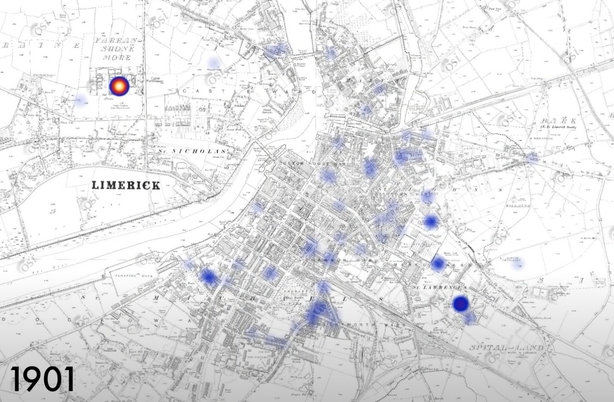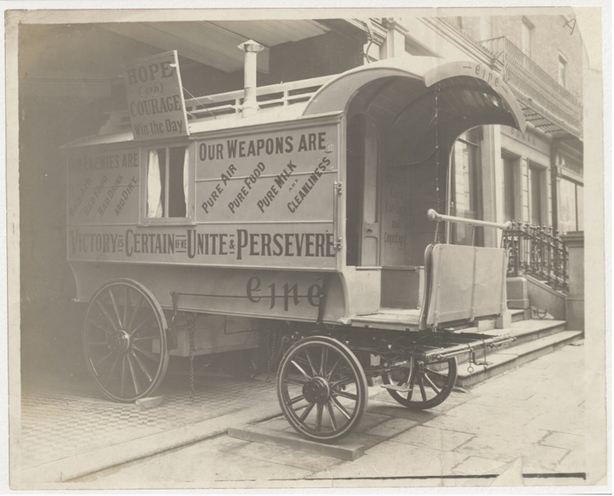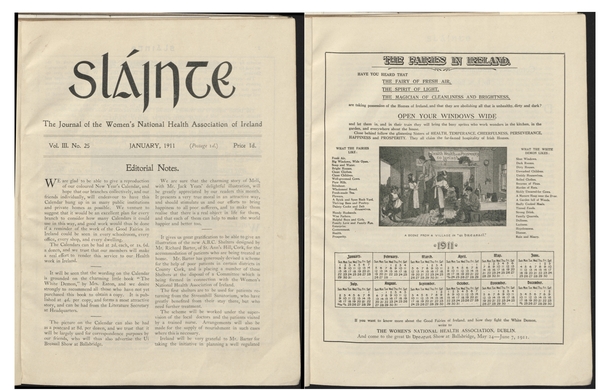Analysis: Limerick's experience with the chronic disease and its related social stigma are the focus of a new exhibition
By Ciara Breathnach, Stuart Clancy and Rachel Murphy, University of Limerick
Tuberculosis is a chronic disease, its slow pace contrasting sharply with the acute, rapid onset of short duration diseases like influenza. Although it can attack several parts of the body, it is most commonly associated with lung disease.
The history of pulmonary tuberculosis and the related social stigma form the focus of a recently-launched online exhibition at the University of Limerick. Frank McCourt's Angela's Ashes: A memoir drew on his childhood in Limerick and resonated with readers internationally when it was published in 1996. Locally, though, some challenged the veracity of his claims about the depths of poverty in the lanes and thus the perennial battle of history and memory came to the fore.
In this exhibition, we examine the impact of tuberculosis on Limerick City by layering a timeline of legislation with heatmaps of individual level historical cause of death data (transcribed by our students) to investigate why the disease earned its pariah status. Nationally, tuberculosis caused 12,848 deaths in 1900 (14.6% of all deaths), 10,016 (13.3%) in 1910 and 7,651 (11.5%) in 1920. In 1930 it still accounted for 9.2% of all deaths.

Despite the statistical likelihood that every family felt its impact, it remained a highly-stigmatised disease. Its ravages were distinctly felt in disadvantaged areas like the Limerick lanes. Often dubbed the scourge of humanity, tuberculosis was poorly understood until 1882 when Robert Koch (1843-1910) the 'Father of bacteriology’, proved beyond doubt that it was a microbial disease. Dispelling the deeply embedded but unscientific miasma (bad air) theory, this watershed discovery gave rise to many medical innovations in detection, prevention and treatment.
The early 20th century saw a decline in mortality in several European countries, but deaths from tuberculosis in Ireland remained high for a number of medico-legal reasons. Its exclusion from the schedule of notifiable diseases in 1899 was a missed opportunity to tackle it directly and the Tuberculosis Acts (1908 and 1913) were equally toothless . It was not until the Health Act (1947), which established a separate ministry for health, that legislative provision was created for mandatory notification.
Public health activism

Sanitoria, promoting a fresh air regimen coupled with rest and proper diet, were commonly used in treatment across Europe. When Lady Aberdeen, the wife of the Lord Lieutenant of Ireland, founded the Women's National Health Association of Ireland in 1907, the Royal National Hospital for Consumption for Ireland in Newcastle, Co Wicklow was the only sanatorium in the country.
Established in 1896, it was a small unit, accepting only fee-paying patients and beyond the means of many people. Instead, they came to rely on the Poor Law Union hospitals when their health failed. But these settings were ill-equipped to deal with the scale of the problem, much to the frustration of public health crusaders and medical officers.
Women's National Health Association members tackled the disease through raising public health awareness of detection and modes of prevention. They travelled around the country in a caravan named Éire, which was covered in bilingual public health messages. They gave public lectures and published a magazine, Sláinte to dispel myths and promote better public hygiene.

The human toll
Infectious disease outbreaks occur in highly localised patterns and each pathogen presents a different array of challenges to public health. Close-quartered, damp tenement houses in the lanes of Irish cities, where between 5 and 15 people occupied small rooms, provided the perfect conditions for the spread of airborne diseases. With no space to 'self-isolate' people managed illness as best they could until the final stages, when they were forced to turn to workhouses, which later became county hospitals.
While deaths from pulmonary tuberculosis occurred in a range of Limerick locations, our maps show that it was particularly evident in the city centre, and in institutions like the workhouse and the asylum. Pulmonary tuberculosis took a particular toll on the 15 to 45 age cohorts in working-class and poor areas.

Stigma of the disease
Miasma theory had a moral framing that was difficult to unseat. Despite significant advances in medical science the links between poverty, disease and notions of respectability were inextricable. Anecdotal evidence suggests that silence served an important social function of hiding the shame of contagion and maintaining household respectability if one member was ill.
In the Limerick lanes, as elsewhere, respectability in poverty was central to marriage and job prospects. When the workhouse ‘closed’ in March 1922, the site was repurposed as Limerick City Home and Hospital to provide care and refuge to the sick poor, the elderly as well as single mothers and their infants. It never shed the ‘pauper taint’ and the stigma and shame that it embodied: Limerick’s first sanitorium was located there in 1935.
Born in the lanes in 1930, McCourt’s experience of insanitary and substandard housing was no different to that of the inhabitants in 1901 and 1911, as the census shows. When Angela’s Ashes won a Pulitzer Prize for Biography in 1997, it catapulted McCourt and the poverty of the now demolished Limerick lanes into an international limelight. In truth, his book could have been about the experience of poverty and pulmonary tuberculosis in any Irish city, town or village yet it bore a curious level of stigma and shame that endured until recently.
Today the number of cases in Ireland is limited to hundreds per annum, and deaths are rare, but tuberculosis remains a global public health issue owing to multi-drug resistant variants. The social stigma that existed in Ireland persists in a number of developing economies. Like the Women's National Health Association, the World Health Organisation continues to raise awareness of the disease and works hard to end discrimination.
This research was funded by an Irish Research Council Laureate Award.
Dr Ciara Breathnach is Associate Professor in History and Principal Investigator of Death and Burial Data, 1864-1922 (DBDIrl) an Irish Research Council Laureate Award located at the University of Limerick. Dr Rachel Murphy is the DBDIrl Postdoctoral Researcher at the University of Limerick. Stuart Clancy Stuart Clancy is a recent PhD graduate from the School of History and an Irish Research Council Laureate Scholar at University of Limerick.
The views expressed here are those of the author and do not represent or reflect the views of RTÉ


